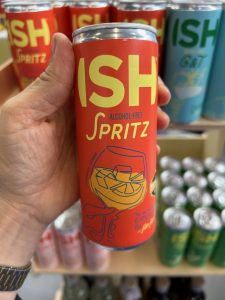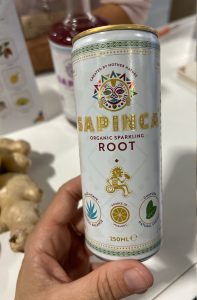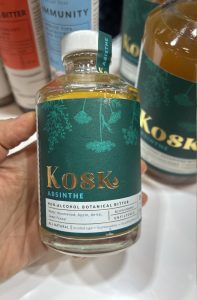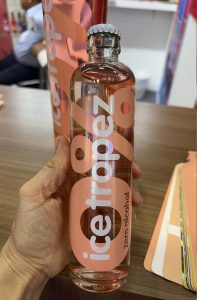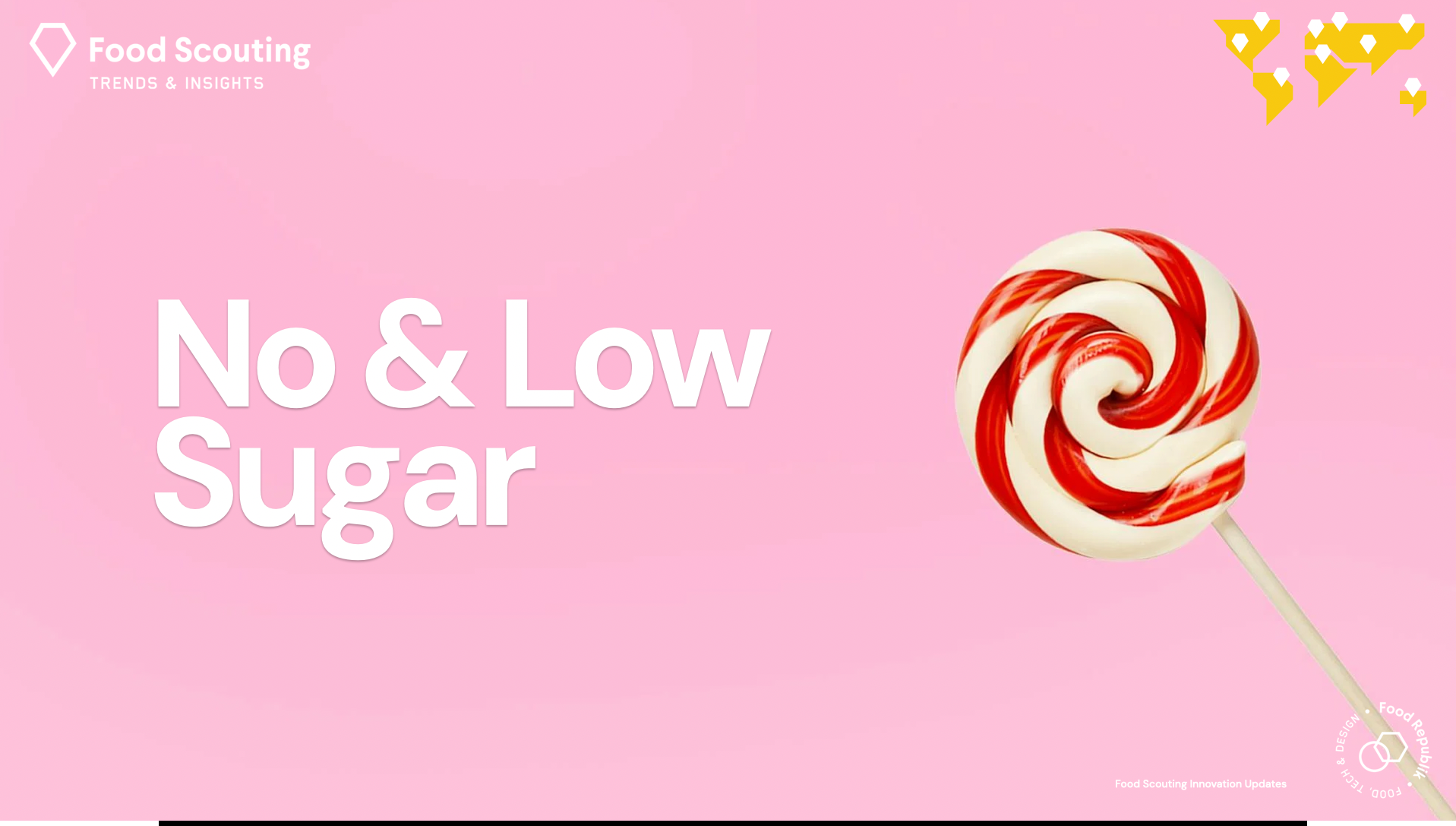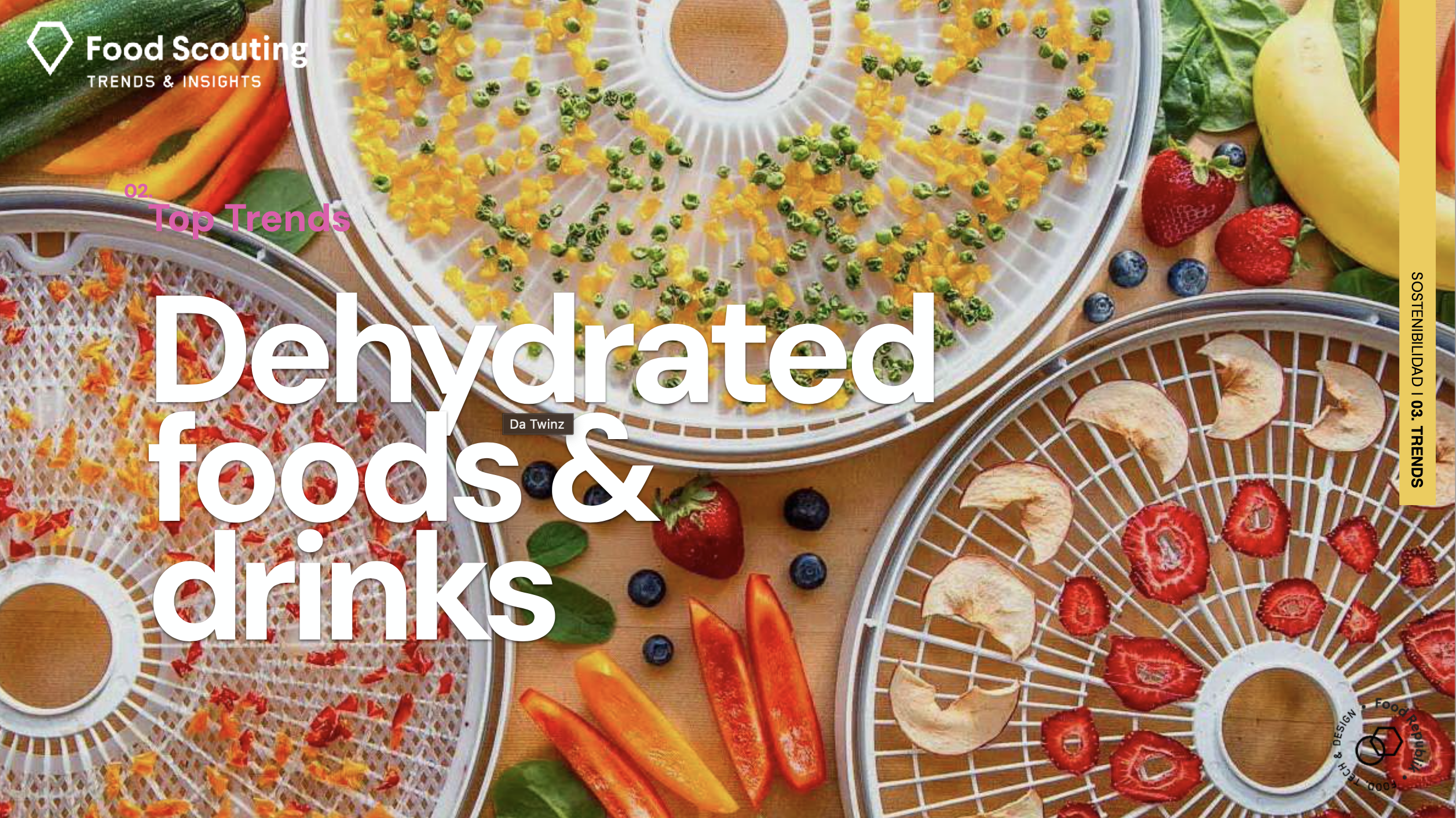Trends Non-alcoholic beverages: global consumption changes【Get to know them】
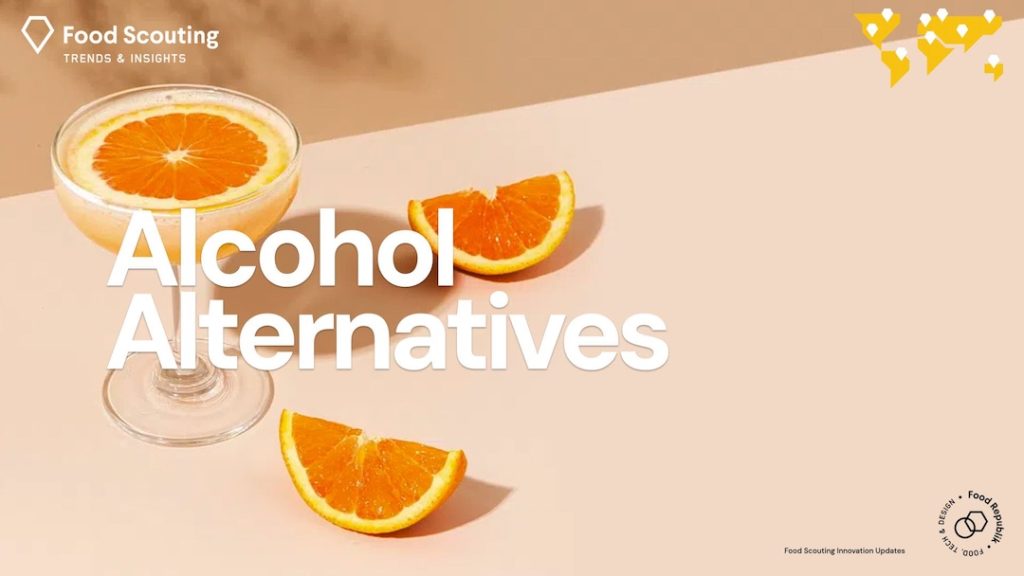
We analyze the main trends in non-alcoholic beverages in 2025. The new luxury of toasting with a conscience.
The reduction of alcohol consumption is no longer an exception, but a growing global trend that is part of a profound change in drinking habits. Not drinking is no longer just for pregnant women or designated drivers: it is a conscious choice linked to well-being, mental health and self-care, especially among the younger generations.
In this article, we analyze the context of cultural change driving this evolution, explore the main lines of innovation, analyze the emerging categories and highlight the key brands that are leading the way. And we take a look at the strategic opportunities that are opening up for beverage companies that want to position themselves strongly in this rapidly expanding category…
Context: Why are non-alcoholic beverages an unstoppable trend?
We analyze the main reasons for this global context:
Moderation and wellness: conscious consumption goes mainstream
Since 2022, at trade fairs, bars and supermarkets around the world, responsible consumption has become a new social and market standard for reasons of health, mental clarity, wellbeing and weight control.
The data reflect this:
-
- In the U.S., alcohol consumption among young adults (18-34 years) has fallen 10% in the last decade (Gallup).
- Generation Z drinks 20% less than millennials at the same age (Business Insider).
- In the United Kingdom, 50% of the population is reducing its consumption (Club Soda).
- In Spain, the non-alcoholic beverage market has been growing at 18% per year for three years (Food Retail).
From stigma to choice: the cultural change around “not drinking”.
Not drinking no longer implies feeling excluded or out of place. On the contrary: choosing a non-alcoholic beverage is increasingly associated with a conscious, respected and stylish decision. The ritual of the toast remains, albeit without degrees.
Gen Z and Millennials: key drivers of change
These generations are redefining consumption. They demand choices consistent with their values: health, sustainability, authenticity and control. They are informed and demanding consumers, seeking experiences without compromising wellness.
Liquid innovation: how non-alcoholic beverages have evolved
From simple juices to premium experiences
Non-alcoholic beverages are no longer synonymous with juices or soft drinks. Today they are developed with botanical ingredients, complex fermentations and sophisticated packaging designs. The result: proposals that seduce not only for their sensory appeal, but also for their aesthetics, consumption ritual and ability to generate experiences that connect with the consumer, at the same level – or even above – their alcoholic counterparts.
Imitating the experience: alternatives that replicate the alcohol ritual
Gin and tonics, wines, classic cocktails… all have today their 0.0 version. Same format, same ritual, same brands, but without the alcoholic content. These proposals allow the consumer to fully integrate into the social experience without renouncing its values.
Reinventing pleasure: botanical, floral and fermented flavors
Other brands are committed to creating entirely new profiles. Natural bitters, floral, fermentations with character, unusual ingredients… all at the service of a different and sophisticated sensory experience.
Innovation map: trending non-alcoholic beverage categories
Non-alcoholic beers: from the classic taste to the craft boom 0.0
0.0 beers – those completely free of alcohol – have undergone a remarkable evolution in recent years. Thanks to more precise controlled fermentation and de-alcoholization techniques, increasingly complex and balanced sensory profiles are achieved. This progress has given rise to a new generation of non-alcoholic craft beers, which not only seek to imitate the classic taste, but also to offer differentiated experiences within the beer universe.
Non-alcoholic distillates: gins, rums and non-alcoholic whiskeys with real experience
The combination of carefully selected botanicals and sophisticated extraction techniques has allowed the development of non-alcoholic distillates with body, complexity and aromatic structure. These qualities make them perfectly suited for professional bartending and the design of sensory experiences on a par with traditional distillates.
Non-alcoholic wines and sparkling wines: new techniques and growing social acceptance of new beverages for celebrations.
Thanks to technologies such as vacuum distillation or reverse osmosis, non-alcoholic wines and sparkling wines have managed to preserve most of their organoleptic properties. This has significantly improved their perception in the market, opening the door to demanding gastronomic contexts, such as haute cuisine restaurants or specialized tastings. In addition, their inclusion in non-alcoholic pairings allows for a broadening of culinary experiences without renouncing the enogastronomic ritual.
Kombuchas and fermented beverages: health, flavor and culture in a functional drink
Kombuchas, kefir, kvass and other fermented beverages have established themselves as alternatives that balance health and pleasure. Rich in natural probiotics, organic acids and bioactive compounds, they provide digestive benefits and a complex-acid taste profile much appreciated by exploratory consumers. In addition, they offer more adult, less sweet experiences and flavors, and at a high price, they compete with other more premium alcoholic beverages.
Ready-to-drink iced teas and coffees: between practicality and modern rituals
Ready-to-drink (RTD) iced teas and coffees have gained presence in supermarket and specialty store refrigerators, thanks to their combination of practicality, naturalness and style. Made with real infusions, high quality extracts and without excess sugar, they are integrated into daily routines as a conscious break or energy boost. Their thoughtful aesthetics and use of functional ingredients reinforce their positioning as premium products for the urban consumer.
Natural soft drinks and waters with functionality: less sugar, more botanicals
This category is reinventing itself with proposals that prioritize transparency and wellness. Added sugars are replaced by natural and functional flavors: waters infused with herbs, fruits or spices; soft drinks with electrolytes for active hydration; and even blends with adaptogens or vitamins for different daily needs. An evolution that responds to an informed consumer, who no longer chooses only by taste, but also by functionality and nutritional profile.
Adaptogenic and nootropic drinks: mental wellness in liquid form
Mental health has become a cross-cutting priority, and this category responds with liquid solutions that combine herbal tradition and modern science. Adaptogens such as ashwagandha, ginseng or rhodiola, and nootropic compounds such as l-theanine or liposomal magnesium, are integrated into beverages that promise to improve focus, reduce fatigue or balance mood. It’s not just about hydrating, it’s about doing it with purpose and awareness.
On-trade and social consumption: keys for bars, restaurants and events
In this revolution, the horeca channel has driven the expansion of the category. We found key opportunities for the sector:
The role of the non-alcoholic consumer as a group decision-maker
The non-drinking diner can be the one who decides where to go. Having attractive 0.0 options on the menu is no longer an extra: it is a strategy to attract entire groups.
How to design an attractive cocktail menu 0.0
Variety, premium ingredients, careful presentation and aspirational language are key to elevate the non-alcoholic offer to the same level as traditional cocktails.
Hospitality success stories: a well-executed non-alcoholic experience
The hospitality industry is successfully integrating non-alcoholic options into increasingly sophisticated menus. In Madrid, the following stand out Salmon Guru o Lola 09with creative proposals that compete in quality with traditional cocktails. Internationally, stores such as Club Soda in London, World of Nix in Amsterdam or bars like The Virgin Mary (Dublin) or Life on Mars (Seattle) show that the 0.0 experience can also be differential and profitable.
Brands that are leading the alcohol-free revolution
Some of the brands that we have discovered during our Food Scouting tours at international fairs and that represent this new trend very well due to their value proposition and organoleptic properties are:
ISH: Ready-to-drink mocktails
From Denmark come some wines, spirits and the trendy but non-alcoholic cocktails – mocktails – ready to drink, perfectly imitating their originals. If you fancy a spritz, a gin & tonic, a mojito or even a pigeon but not a drink, here are your options without. Of superior quality and with a taste almost indistinguishable from the original, they are an alternative to feel “social” without drinking.
SAPINCA: the drink of the Incas
A most versatile drink – Sapica combines a ginger base with 10 functional botanicals such as turmeric, maca, yacon fiber, galangal and ashwagandha to provide functionality as well as delicious taste. It can be taken on its own as a healthy shot, mixed with sparkling water or tonic to make an interesting but non-alcoholic drink, or even with hot water to drink as an infusion.
KOSK: botanical bitters with a European identity
Non-alcoholic botanical bitters made with wild blueberries, apple juice, hibiscus, mint and lavender, with a hint of fireweed bitters.fireweed). Designed to be mixed with water, tonic or soda. A versatile, natural and sophisticated proposal that allows you to create elegant mixers without alcohol.
ICE TROPEZ: low alcohol and high social attractiveness
The trendy wine cocktail with peach aromas in its non-alcoholic version – a positioning that blends style, freshness and taste. An option for those looking for a light, chic and social drink.
Other emerging brands and what we can learn from them
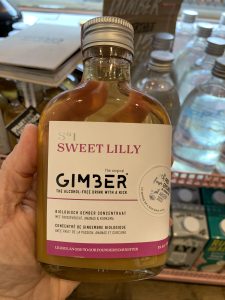
GIMBER is a ginger-based drink with lemon, herbs and spices that is triumphing on both sides of the Atlantic. Effervescent, fermented and non-alcoholic teas offer sophisticated food pairings for gastronomic menus, with exceptional aromas and flavors that complement the experience of wine and cocktail cultures such as Lithuania’s Acala. Three Spirit Social Elixir is a UK pioneer, an herbal elixir designed to enhance the social experience with ingredients such as lion’s mane, yerba mate and damiana, promising to elevate the mood and enjoy social moments.
New consumption moments, new opportunities
Non-alcoholic toast for afterwork, brunch or pre-workout
Non-alcoholic beverages are being integrated into new moments of the day, beyond the evening or the weekend. From a brunch with friends to a relaxed afterwork or a social break at lunchtime, they broaden the occasions for consumption with proposals that allow enjoyment without compromising well-being with an attractive and suggestive ritual proposal.
Non-alcoholic pairings: a new gastronomic frontier
Proposals that accompany dishes with well-structured non-alcoholic beverages are growing. A field with great potential for chefs and sommeliers.
Celebrations, events and experiences without degrees
Weddings, brand events or family parties: 0.0 is no longer a marginal option, but part of a differential and sophisticated experience.
This information is part of the 9 Trends to 2025 report.
If you want to learn more about this topic or other innovation categories, please contact us! If you have an innovation challenge, we have cases and information that will help you make strategic decisions.

